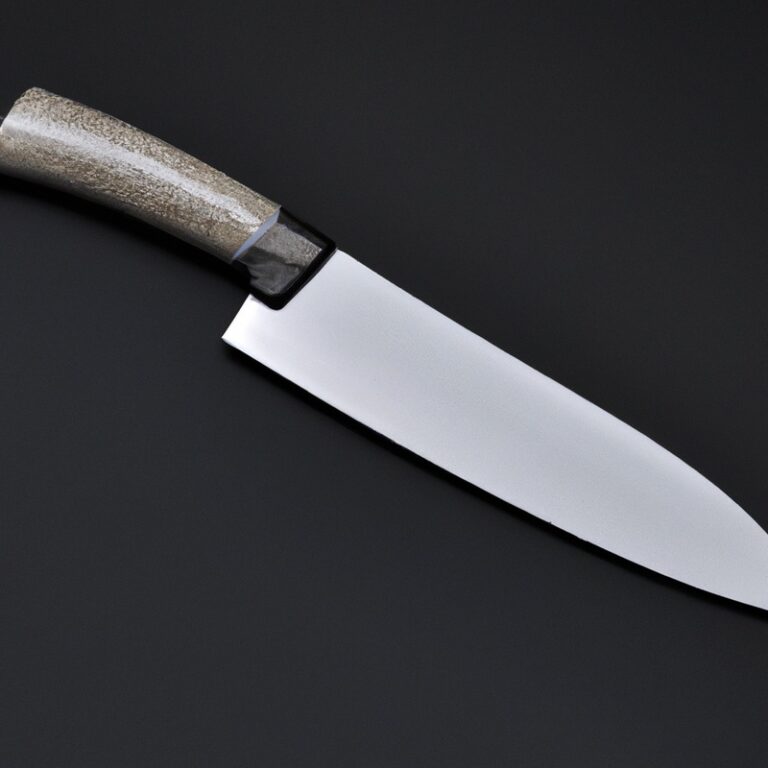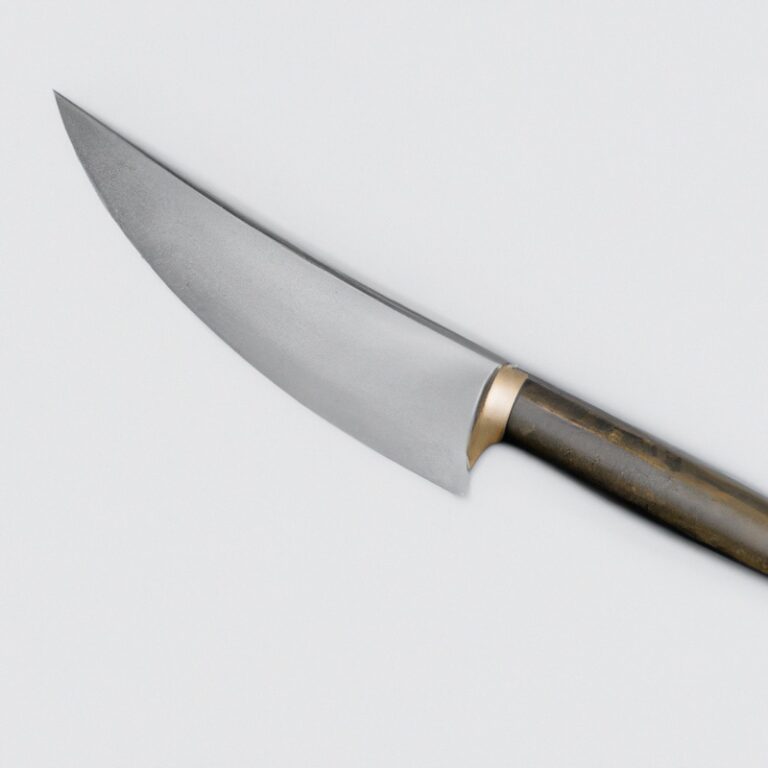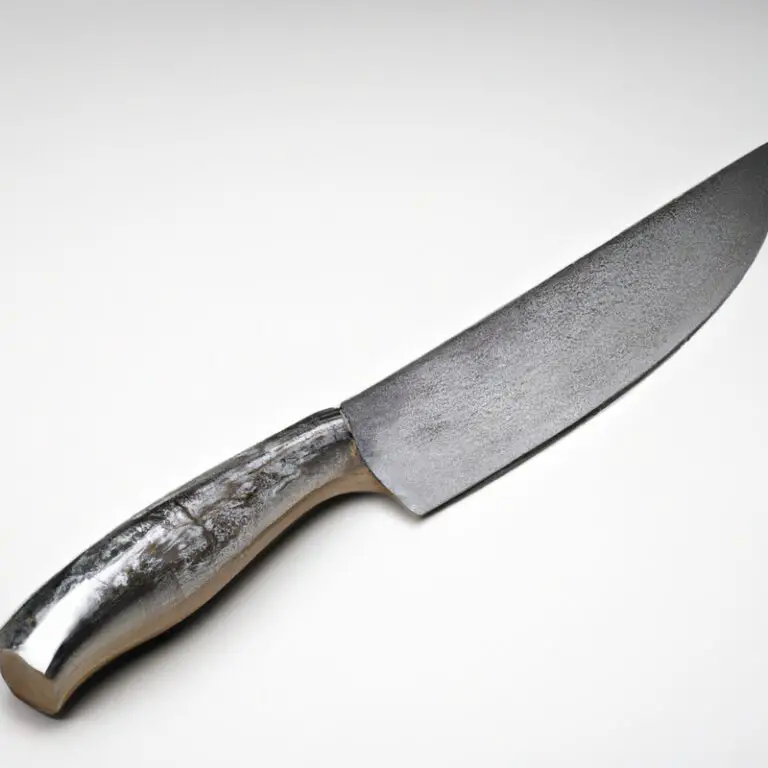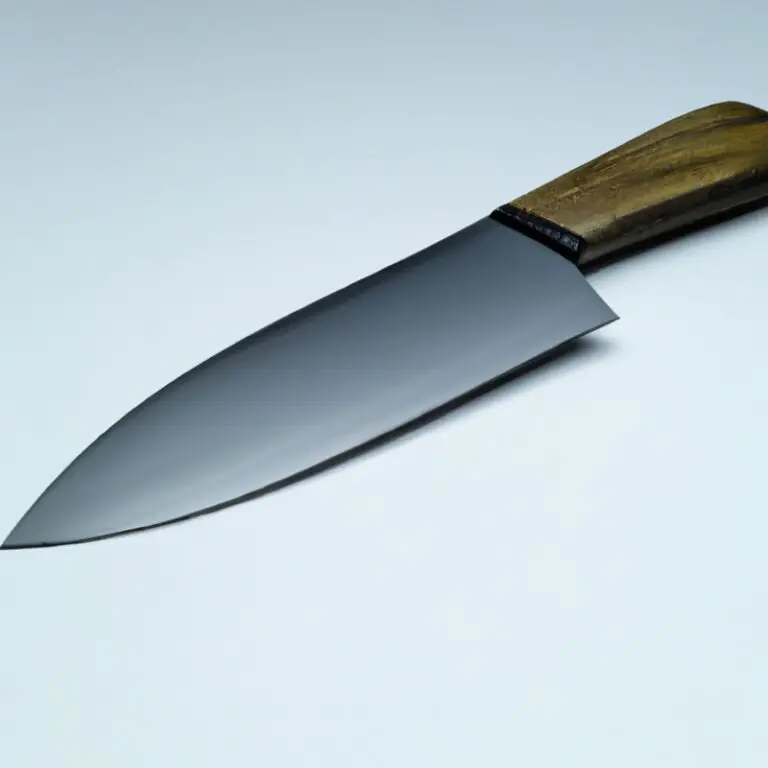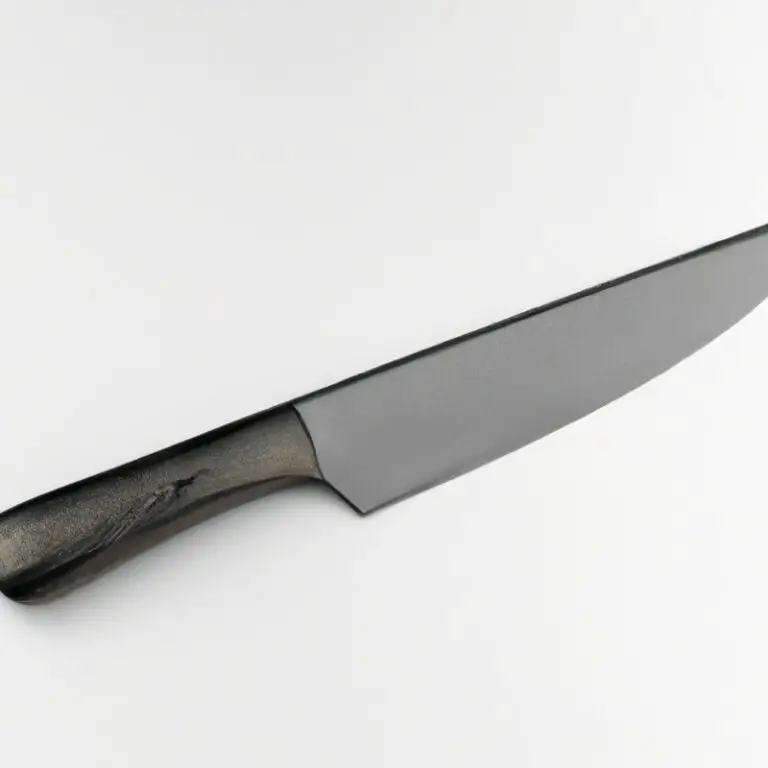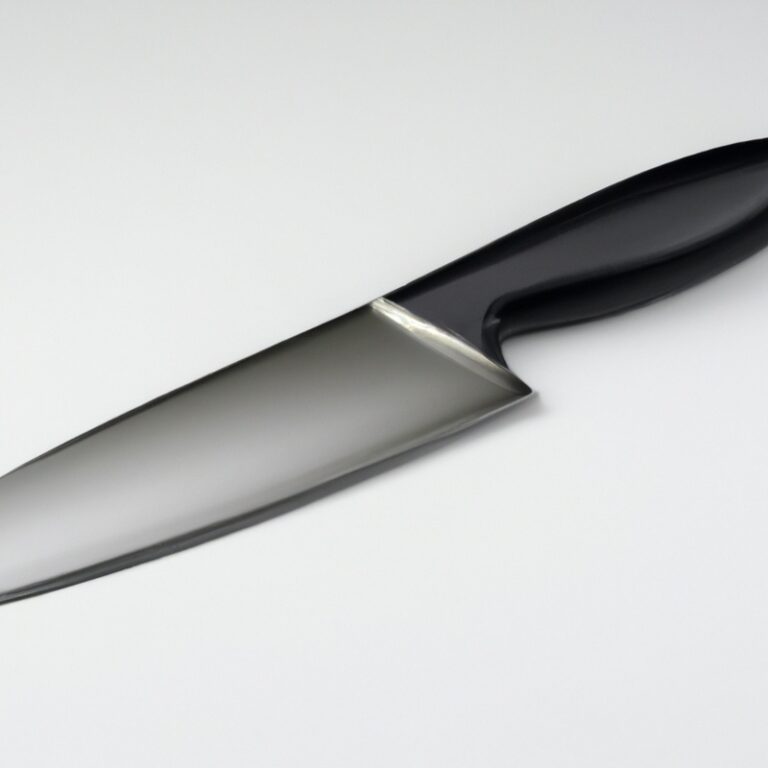What Are The Differences Between a Gyuto Knife And a Western-Style Chef’s Knife? Explained
Key Takeaways:
- A Gyuto knife is a Japanese-style knife with a thinner, sharper blade that excels at precise slicing and dicing, while a Western-style chef’s knife has a thicker, heavier blade that is better suited for heavier chopping and cutting tasks.
- The blade angle of a Gyuto knife is sharper than a Western-style chef’s knife, allowing for effortless cutting and slicing of vegetables and fruit.
- A Western-style chef’s knife typically has a curved, ergonomic handle and a more robust construction, making it well-suited for extended use in professional kitchens.
- Ultimately, the choice between a Gyuto knife and a Western-style chef’s knife depends on personal preference and the specific task at hand, but both knives can be excellent choices for a wide variety of cooking tasks.
Are you tired of not knowing which knife to use for different cooking tasks? Look no further! In this article, we will delve into the differences between two of the most commonly used knives in the kitchen: the Gyuto knife and the Western-style chef’s knife.
Each knife has unique characteristics that appeal to specific needs and preferences.
By understanding these differences, you will be able to choose the best knife for your culinary adventures. As a professional chef who has used both knives extensively, I will share my expertise to help you make an informed decision.
So let’s get started!
| Gyuto Knife | Western-style Chef’s Knife |
|---|---|
| Originates from Japan | Originates from Europe |
| Light, agile blade | Heavier, thick blade for chopping |
| Slicing and precise cuts | Chopping and rocking motion |
| Narrower blade angle | Wider blade angle |
| Sharp bevel angle for sharp cuts | Less sharp bevel angle for durability |
| Suitable for professionals and home cooks | Suitable for home cooks |
| Requires more maintenance | Requires less maintenance |
Anatomy of a Gyuto knife and a Western-style chef’s knife: Understanding the Differences
The anatomy of a Gyuto knife and a Western-style chef’s knife is often the first difference noted by chefs and home cooks. Gyuto knives from Japan have thinner blades with a steep edge angle, making them excellent for precise slicing and chopping vegetables and meat.
The blade’s geometry typically has a flatter heel and a curved edge for greater control.
Western-style chef’s knives have thicker, heavier blades with a wider edge angle, making them ideal for tougher foods and heavier tasks, such as breaking down poultry or trimming beef. The blade’s geometry is curved with a gradual taper towards the tip, which is more versatile for rocking and chopping motions.
The handles of Gyuto knives often have a traditional Japanese octagonal shape with a slender grip.
They are generally lighter than Western-style knives and may be made of different materials such as hardwood, micarta, or stabilized wood. In contrast, Western-style chef’s knives typically have a thicker, ergonomically-designed handle with a full tang for more balance and stability.
The handle also often has a bolster or finger guard for added safety.
Understanding the anatomy of a Gyuto knife and a Western-style chef’s knife is crucial when deciding on the right knife for your kitchen. The differences in blade geometry, steel composition, handle design, and blade edge should all be taken into consideration for your specific cooking needs and style.
The Blade Geometry of a Gyuto knife vs a Western-style chef’s knife: A Comparison
The blade geometry of a gyuto knife and a western-style chef’s knife differs in several aspects. Gyuto knives feature a thinner and lighter blade with a angled tip that facilitates smooth and agile cutting motions.
On the other hand, western-style chef’s knives have a thicker and heavier blade with a rounded tip that can handle tough cutting tasks with ease.
Additionally, gyuto knives have a straighter edge angle that ranges from 12-15 degrees on either side, while western-style chef’s knives have a wider edge angle ranging from 20-22 degrees. The sharper edge of the gyuto knife makes it more efficient for precise slicing and chopping, whereas the broad edge angle of the western-style chef’s knife ensures durability and resilience when handling tough ingredients.
Ultimately, the choice between the two depends on your personal preference and style of cooking.
Understanding the Steel Composition Differences Between a Gyuto Knife and a Western-style Chef’s Knife
Each knife has a specific steel composition that plays a significant role in its performance, durability, and longevity. Gyuto knives often use high carbon steel that can hold a sharper edge for a longer time, while Western-style chef’s knives often use stainless steel that is easier to maintain and resists rust and corrosion.
However, some Japanese manufacturers have started using stainless steel for their Gyuto knives.
Stainless steel is softer than carbon steel, so it might require frequent sharpening. Ultimately, the type of steel composition for your knife will depend on your cooking style, preferences, and budget.
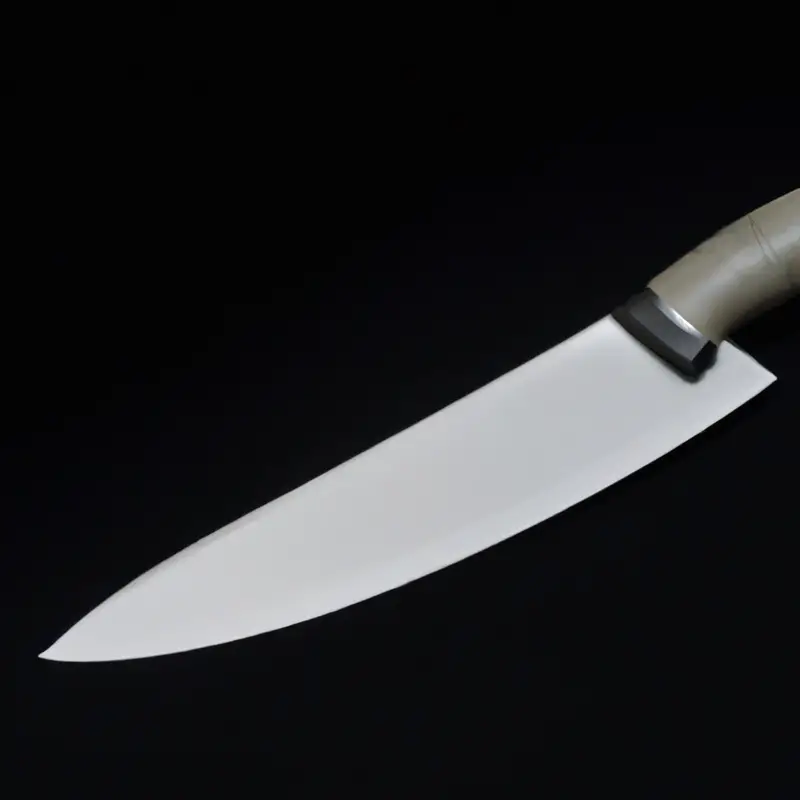
Gyuto Knife vs Western-style Chef’s Knife: Handle and Grip Design Comparison
The handle and grip design of a Gyuto knife and a Western-style chef’s knife play a significant role in comfort and control during use. Gyuto handles are typically made from traditional Japanese materials such as Magnolia wood, while Western-style handles are commonly made from synthetic materials like plastic or rubber.
Western-style handles have a full tang that extends through the handle, while traditional Gyuto knives may have a partial tang or no tang at all.
The grip style on a Gyuto knife is a pinch grip with the fingers curled around the blade, while the Western-style chef’s knife offers a more traditional grip with all fingers wrapped around the handle. Ultimately, choosing between a Gyuto knife and a Western-style chef’s knife handle and grip design depends on personal preference and the user’s level of comfort and control with each style.
Blade Edge Design of a Gyuto Knife and a Western-style Chef’s Knife: Which is Best for Me?
The blade edge design of a Gyuto knife and a Western-style chef’s knife differ significantly. Gyuto knives have a thinner and sharper edge angle, making them ideal for precision tasks like chopping vegetables, fish, and meat.
Western-style chef’s knives have a wider edge angle, making them better suited for tough tasks like breaking down bones and cutting through thick meat.
When deciding which knife is best for you, consider your cooking needs and the types of ingredients you typically work with.
The Purpose and Utility of a Gyuto Knife: Is it Right for Your Kitchen?
A Gyuto knife is a versatile and multipurpose knife that can be used for various kitchen tasks. It is commonly used for slicing, dicing, chopping, and mincing vegetables, fruits, and meats.
The slender and sharp blade of a Gyuto knife allows for precise cuts and easy maneuverability.
If you are someone who enjoys a wide range of cooking styles, the Gyuto knife is a great addition to your kitchen. With its deep and slightly curved blade, it can handle various ingredients with ease.
However, if you prefer heavier and more robust knives, a Western-style chef’s knife may be a better option for you.
When deciding on whether a Gyuto knife is right for your kitchen, consider your cooking style and the tasks you frequently perform. If you enjoy cooking and experimenting with different ingredients, a Gyuto knife is a must-have in your kitchen.
Its versatility and precision will ensure that you can prepare your meals with ease and confidence.
Why Choose a Western-style Chef’s Knife Over a Gyuto Knife? The Pros and Cons
When choosing between a Western-style chef’s knife and a Gyuto knife, there are pros and cons to consider. Pros of choosing a Western-style chef’s knife:
- The weight and balance of a Western-style chef’s knife allow for more forceful cutting motions and easier chopping of tougher ingredients.
- The shape of the blade is better for rocking back and forth, making it ideal for tasks such as mincing garlic or herbs.
- The wider blade provides more knuckle clearance and a larger cutting area.
Cons of choosing a Western-style chef’s knife:
- The blade is thicker and heavier, which can be unwieldy for some users.
- The wider blade may not be as suitable for precision tasks such as peeling or thinly slicing vegetables or fish.
Ultimately, the decision between a Western-style chef’s knife and a Gyuto knife comes down to personal preference and the tasks you frequently perform in the kitchen. Consider the pros and cons carefully to determine which knife will best suit your needs.
Determining the Best Knife for Your Cooking Style: Gyuto Knife or Western-style Chef’s Knife
Determining the best knife for your cooking style depends on personal preferences and needs. If you are looking for a versatile knife that can handle a variety of slicing, chopping, and dicing tasks, then a Western-style chef’s knife might be the best choice.
It has a pointed tip, a curved blade, and a wide heel that allows for rocking motion during chopping.
However, if you are more interested in precision slicing and want a knife that feels lighter and more agile in your hand, then a Gyuto knife might be the way to go. It has a flatter belly and a slimmer blade for more precise cuts, making it ideal for thinner meats, fish, and vegetables.
Consider the size of the knife that best fits your hand and the type of cuisine you regularly cook when making a choice between the two.
Ultimately, the decision between a Gyuto knife and a Western-style chef’s knife comes down to personal preference and the tasks for which you will use the knife.
The Maintenance and Sharpening of a Gyuto Knife vs a Western-style Chef’s Knife
Maintaining and sharpening a Gyuto knife is different from a Western-style chef’s knife. Gyuto knives require careful sharpening, as they have a thinner blade and a more acute angle.
They also require more frequent honing than Western-style chef’s knives.
It’s essential to use a sharpening stone to maintain the sharpness of a Gyuto knife properly. Meanwhile, Western-style chef’s knives have a broader blade and a larger angle, making them more durable.
They require less frequent sharpening and are easier to sharpen themselves.
However, it’s still recommended to use a sharpening stone to maintain their sharpness. When it comes to maintenance, both types of knives need proper care and cleaning to prevent rust and corrosion.
It’s best to clean them after each use, dry them thoroughly, and store them properly.
Overall, the maintenance and sharpening of a Gyuto knife require more attention and care compared to a Western-style chef’s knife. It’s crucial to understand the differences to ensure that your knives stay sharp and perform optimally in the kitchen.
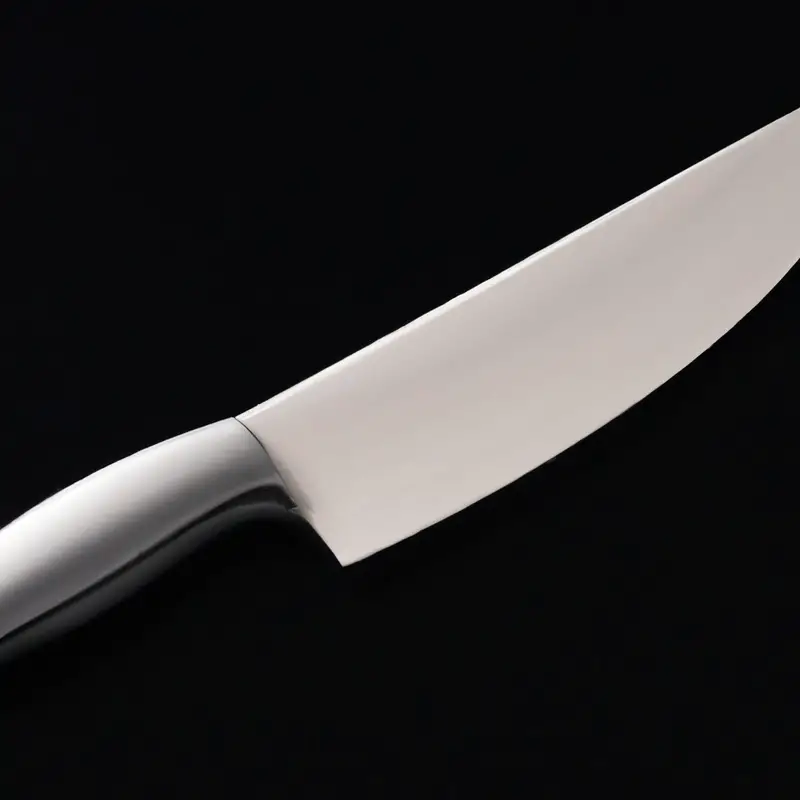
Price Comparison: Gyuto Knife vs Western-style Chef’s Knife. Which is More Worth the Investment?
When considering the price of a gyuto knife versus a western-style chef’s knife, it’s important to note that there is a considerable range in prices for both types of knives. Generally, a high-quality gyuto knife will cost more than a comparable western-style chef’s knife due to its construction and materials.
Gyuto knives are typically crafted by skilled artisans using high-quality Japanese steel, which can drive the cost up.
On the other hand, western-style chef’s knives are commonly made with cheaper materials, such as stainless steel, which can make them more affordable. However, it’s important to consider the long-term value of your investment.
While a gyuto knife may initially cost more, it is often more durable and can maintain its sharp edge longer, resulting in less frequent sharpening and replacement.
In contrast, a cheaper western-style chef’s knife may need to be replaced more frequently, resulting in a greater long-term cost. Ultimately, the decision of which knife to invest in should be based on your personal preferences and cooking needs, as well as your budget.
It’s important to weigh the advantages and disadvantages of each option and consider factors such as durability, sharpness, and maintenance requirements before making a final decision.
Final Verdict
Understanding the differences between a Gyuto knife and a Western-style chef’s knife can greatly improve your cooking experience. From blade geometry and steel composition to handle design and blade edge, both knives have unique features that serve different purposes.
While the Gyuto knife excels in precision and versatility, the Western-style chef’s knife offers greater power and durability.
Ultimately, the choice between the two comes down to personal preference and cooking style. By carefully considering the factors discussed in this article, you can make an informed decision and invest in a knife that best suits your needs.
Remember to properly maintain and sharpen your knife to ensure its longevity.
Whichever knife you choose, make sure it is comfortable to use and inspires confidence in your culinary skills. Trust in the knowledge and expertise shared here and elevate your cooking game with the perfect knife for you.


